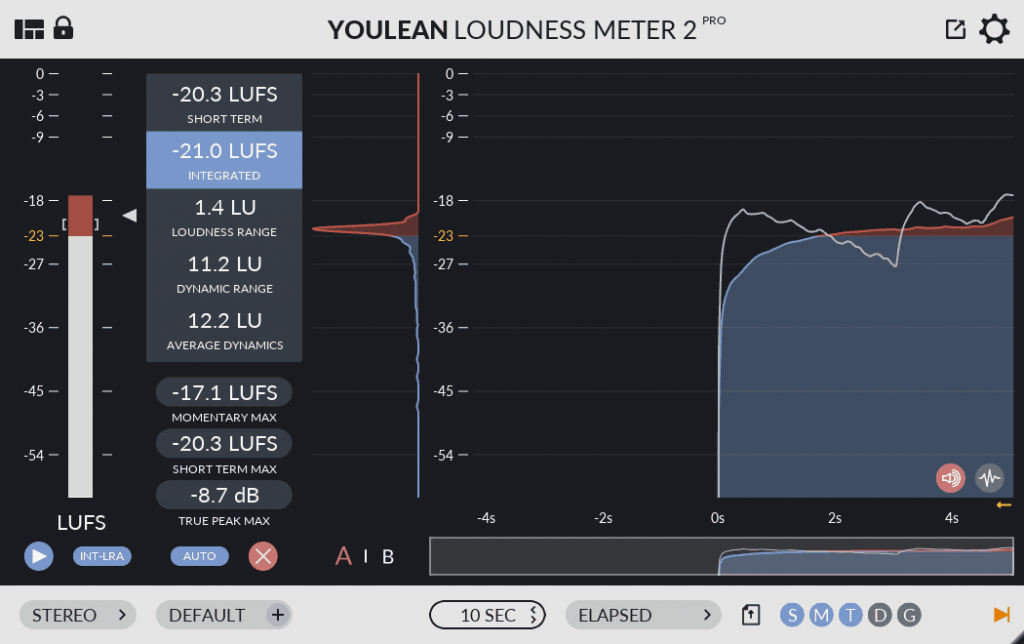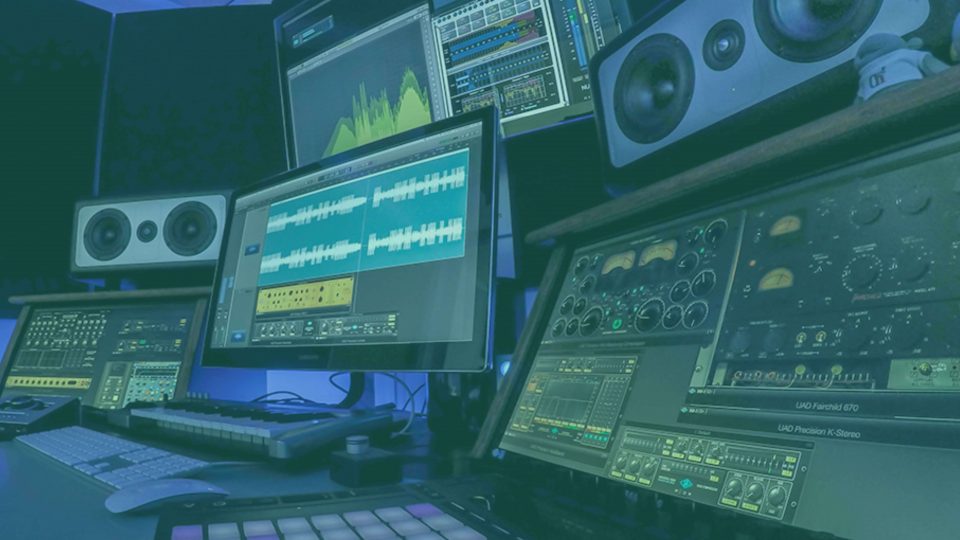How Loud Should You Master Your Music?
Not only does your music have to be loud enough for listeners to hear the dynamics of your track, but streaming services like Apple Music & Spotify are picky about how loud they want the music they stream to be.
How Much dB for Mastering?
The short answer is -12 LUFS to -15 LUFS or -6 dB on a peak meter. This should cover you for most popular streaming services. But let’s get into the specifics here and talk about why dB isn’t the best measurement you could be using.
Load up a loudness meter if you haven’t already. Loudness meters allow for effective gain staging, so they’re very important for both the clarity and loudness of your music.
Loudness Meters analyze audio by taking into account duration as well as frequency and use LUFS (Loudness Unit relative to Full Scale) as their unit for measurement. They allow you to see your average real-time sound level which is essential to get the best master.
LUFS are the standard measurement of loudness in mastering because they normalise audio levels by resembling real-world loudness from a human ear perspective.
As you mix your track down, aim for – 23 LUFS on your loudness meter. This will leave you with plenty of headroom when it comes to mastering.
Listeners will find your music on streaming services more than anywhere else, so optimizing your master loudness for streaming services will get you the best results.
True Peak, RMS, dBTP & LUFS
Should you use a loudness meter, there are some units of measurement you should be aware of.
True Peak
True Peak is the absolute loudness level of a signals waveform. This means it measures the peak levels of both samples and intersample points (points in time between samples).
RMS (Root Mean Square)
RMS is the average power of your signal. An RMS value is very close to what our ears perceive as loudness.
Streaming services won’t really question both True Peak & RMS. They’re just handy units to have knowledge on to get the most out of our track.
dBTP (dB True Peak)
We measure dB True Peak with a True Peak meter, but the unit of measurement is dBFS (dB Full Scale). dBTP represents the peak level of a signal compared to what a device can handle before digital clipping comes into play. Like dBFS scales, 0dBTP is the highest value at which a device can handle a signal without distorting.
LUFS (Loundess Unit relative to Full Scale)
As we said earlier, LUFS allow for the normalization of audio levels – to make a universal unit of measurement which represents real-time loudness.
LU (Loudness Unit) is a separate unit of measurement that represents loundess without reference to Full Scale. This means that LU represents differences in loudness.
For example, the difference between -20 LUFS and -15 LUFS is 5 LU.

How Loud Should My Master Track Be?
Now let’s apply these values to your music. Let’s break down what each of the major platforms looks for.
Spotify
Peak dBTP: -1.0
LUFS: -13 to -15
Apple Music
Peak dBTP: -1.0
LUFS: -16
Amazon Music
Peak dBTP: -1.0
LUFS: -9 to -13
YouTube
Peak dBTP: -1.0
LUFS -13 to -15
Conclusion
So there have it. Now you have the numbers that the streaming giants expect to see from your music, as well as an understanding of the different values that allow you to evaluate what the true loudness of your music is.
To recap, aim for – 23 LUFS on your mix and -12 LUFS to -15 LUFS on your master.
Loudness isn’t as important as it once was. Even when it was important, it was only important due to producers competing with one another to get the loudest track they could.
The problem with this is that it moves the focus to loudness when it should be set on dynamics. Loud music that lacks dynamic range just isn’t as interesting as quieter music with lots of dynamic range.
With that said, a master track that’s too quiet just isn’t as fun to listen to as a louder track.
With all of this in mind, always work to stay between -12 & 015 LUFS and your track will be as loud as it needs to be.
The dynamic range is down to you.
Are you looking for the next killer sample pack for your next killer track? You’re in the right place
Mixxed has thousands of samples for you to choose from. Ranging from Drum and Bass, Trap, Lo-Fi and House… all the way to live instruments for Jazz, Pop and Hip Hop. Melody loops and one-shots to give your listeners the ultimate music experience.
Sign up today and find your sound!
